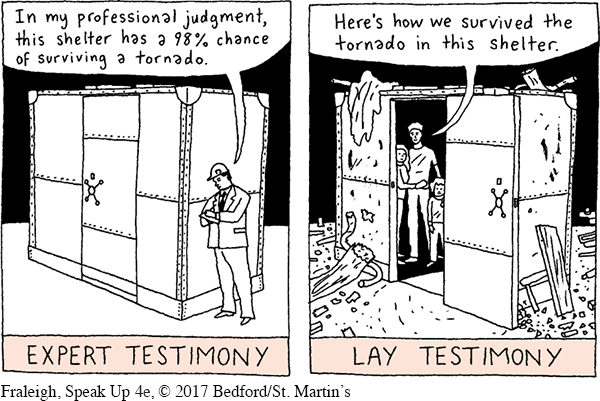Testimony
Testimony consists of information provided by other people. Typically, you will find testimony from the sources you research at the library and online or through interviews.
Expert testimony consists of statements made by credible sources who have professional or other in-
A second type of testimony is lay testimony, which consists of statements made by persons with no special expertise in the subject they are discussing. Because they lack expertise, lay sources generally should not be used to prove factual claims in a speech. This type of testimony is not a substitute for evidence. For example, testimony from laypersons would not credibly prove that a low-
To see an example of a speaker who uses testimony in her speech, try Video Activity 8.1, “Royzpal, Litter.”
237
